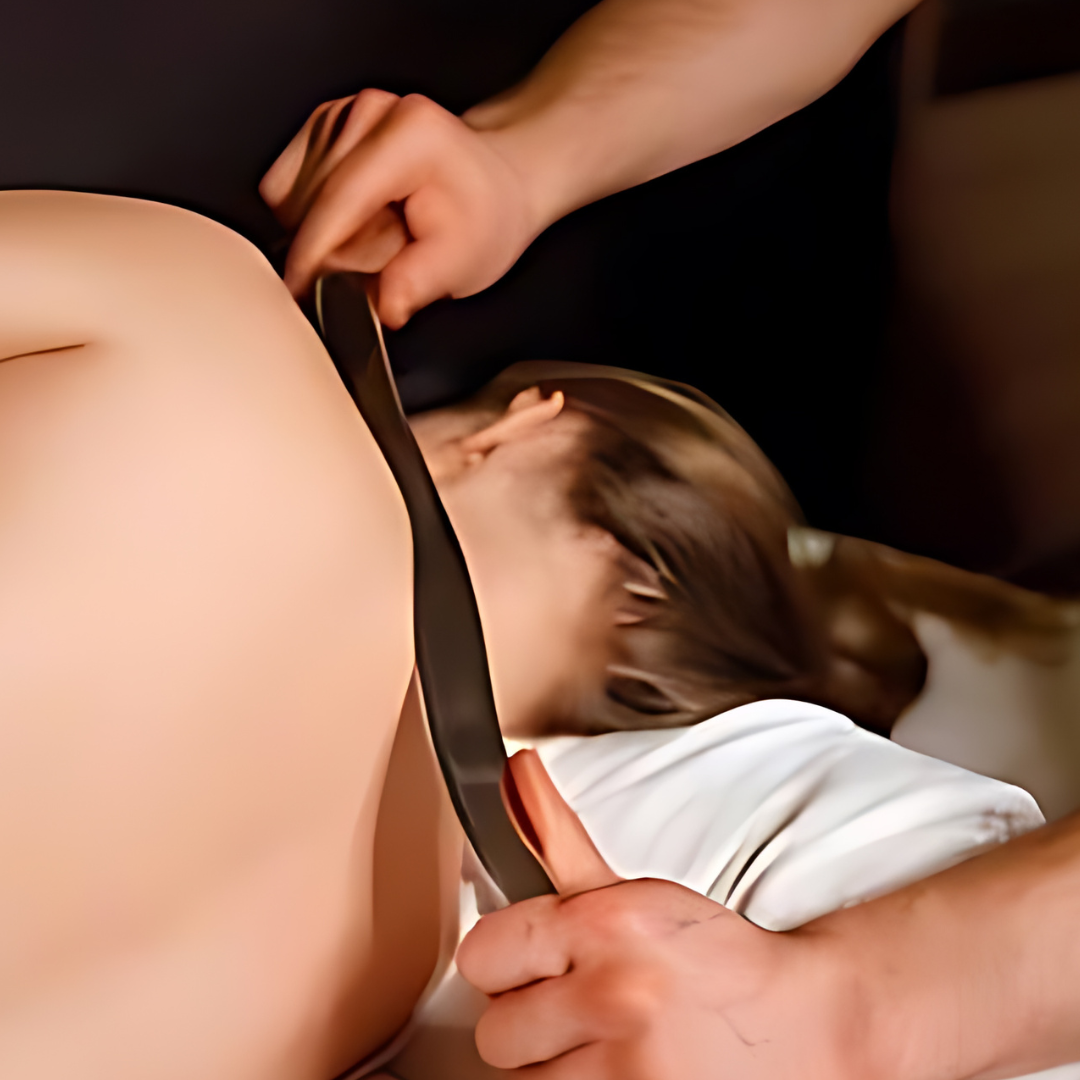Tissue Stripping/Scraping
Stripping is a technique that uses a longer metal bar with specific shapes designed to open up muscles and restricted fascia on a deeper level, enhancing mobility and blood flow to promote healing. It can be applied to larger muscle groups for effective results. In contrast, scraping employs smaller instruments used on more superficial layers or smaller muscle groups and joints. This technique aims to free up restricted scar tissue, improving tissue mobility and facilitating the healing process.
This is a form of manual therapy known as soft-tissue instrument-assisted mobilization. It is one of a number of manual therapy approaches that uses instruments with a specialized form of massage/scraping the skin gently.
The therapy is designed to help the practitioner identify areas of restriction and attempt to break up scar tissue.
This technique is often practiced by Chiropractors, Osteopathic physicians, and Physical therapists.Â
Scraping Goals
The general goals of the therapy are to reduce the patient’s pain and increase function through a combination of:
- Breaking down the scar tissue and fascia restrictions that are usually associated with some form of trauma to the soft tissue (e.g., a strained muscle or a pulled ligament, tendon, or fascia).
- Reducing restrictions by stretching connective tissue in an attempt to rearrange the structure of the soft tissue being treated (e.g., muscle, fascia, tendons, ligaments).
- Promoting a better healing environment for the injured soft tissue.
Additionally, these therapies can enhance overall mobility and flexibility, contributing to improved performance in daily activities and physical exercises. By addressing the underlying issues within the soft tissues, patients often experience long-term relief and a significant reduction in the recurrence of pain and injuries. This comprehensive approach not only aids in recovery but also helps in maintaining optimal musculoskeletal health.
There also appears to be a neurologic benefit to treating patients with Instruments. This response is similar to that involved with other manual therapies. The literature suggests that when a patient is given manual or instrument assisted soft tissue mobilization (IASTM) therapy, certain nerve fibers are activated. Additionally, the body’s position sense organs, such as mechanoreceptors and proprioceptors, seem to respond to these forms of treatment.
Potential Benefits of Scraping/Stripping
Most of the back is comprised of muscles, fascia, ligaments, and tendons. Injuries to these soft tissues play a significant role in the pain and dysfunction associated with back problems. While it may not sound like a serious injury, a simple back muscle strain or torn ligament in the back can cause excruciating pain and difficulty with movement.
This offers several potential advantages to the patient with such an injury:
- Decreasing overall treatment time
- Fostering faster rehabilitation/ recovery
- Reducing the need for anti-inflammatory medication
- Resolving chronic conditions thought to be permanent
The treatment may be used alone or in conjunction with other treatments. This is good for anyone but especially those with chronic pain, athletes, and weight lifters. Freeing up restricted muscles and fascia in combination with chiropractic manipulations is the best overall way to enhance range of motion and overall mobility. This integrated approach helps to maximize the effectiveness of each therapy, ensuring comprehensive care for the patient. Additionally, it can significantly reduce the risk of future injuries by maintaining optimal musculoskeletal health. Patients often find that combining these treatments leads to quicker recovery times and sustained relief from discomfort.
Office Hours
Find Out When We Are Open



